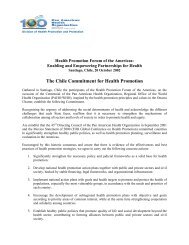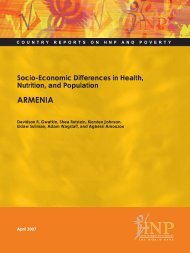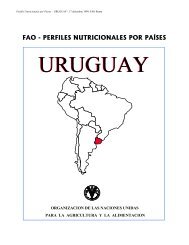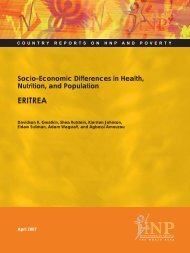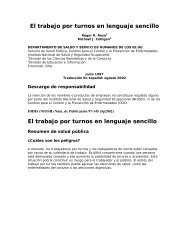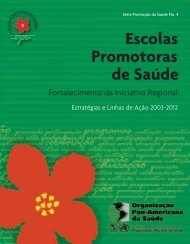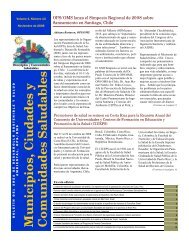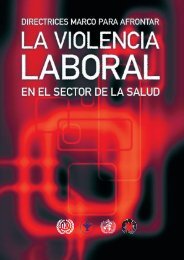Guidelines for drinking-water quality. Volume 1 - BVSDE
Guidelines for drinking-water quality. Volume 1 - BVSDE
Guidelines for drinking-water quality. Volume 1 - BVSDE
Create successful ePaper yourself
Turn your PDF publications into a flip-book with our unique Google optimized e-Paper software.
population, <strong>drinking</strong>-<strong>water</strong> is not a significant source of tin, and levels in <strong>drinking</strong>-<strong>water</strong> greater<br />
than 1-2 µg/litre are exceptional. However, there is increasing use of tin in solder, which may be<br />
used in domestic plumbing.<br />
Tin and inorganic tin compounds are poorly absorbed from the gastrointestinal tract, do not<br />
accumulate in tissues, and are rapidly excreted, primarily in the faeces.<br />
No increased incidence of tumours was observed in long-term carcinogenicity studies conducted<br />
in mice and rats fed stannous chloride. Tin has not been shown to be teratogenic or fetotoxic in<br />
mice, rats, and hamsters. In rats, the NOAEL in a long-term feeding study was 20 mg/kg of body<br />
weight per day.<br />
The main adverse effect on humans of excessive levels of tin in foods (above 150 mg/kg), such<br />
as canned fruit, has been acute gastric irritation. There is no evidence of adverse effects in<br />
humans associated with chronic exposure to tin.<br />
It was concluded that, because of the low toxicity of inorganic tin, a tentative guideline value could<br />
be derived three orders of magnitude higher than the normal tin concentration in <strong>drinking</strong>-<strong>water</strong>.<br />
There<strong>for</strong>e, the presence of tin in <strong>drinking</strong>-<strong>water</strong> does not represent a hazard to human health. For<br />
this reason, the establishment of a numerical guideline value <strong>for</strong> inorganic tin is not deemed<br />
necessary.<br />
Total dissolved solids<br />
Total dissolved solids (TDS) comprise inorganic salts (principally calcium, magnesium,<br />
potassium, sodium, bicarbonates, chlorides and sulfates) and small amounts of organic matter<br />
that are dissolved in <strong>water</strong>. TDS in <strong>drinking</strong>-<strong>water</strong> originate from natural sources, sewage, urban<br />
run-off, and industrial waste<strong>water</strong>. Salts used <strong>for</strong> road de-icing in some countries may also<br />
contribute to the TDS content of <strong>drinking</strong>-<strong>water</strong>. Concentrations of TDS in <strong>water</strong> vary considerably<br />
in different geological regions owing to differences in the solubilities of minerals.<br />
Reliable data on possible health effects associated with the ingestion of TDS in <strong>drinking</strong>-<strong>water</strong> are<br />
not available, and no health-based guideline value is proposed. However, the presence of high<br />
levels of TDS in <strong>drinking</strong>-<strong>water</strong> may be objectionable to consumers.<br />
Uranium<br />
Uranium is present in the earth's crust, principally in the hexavalent <strong>for</strong>m. It is used primarily as a<br />
fuel in nuclear energy plants and is introduced into <strong>water</strong> supplies as a result of leaching from<br />
natural sources, from mill tailings, from emissions from the nuclear industry, from the combustion<br />
of coal and other fuels, and from phosphate fertilizers. Although available in<strong>for</strong>mation on<br />
concentrations in food and <strong>drinking</strong>-<strong>water</strong> is limited, it is likely that food is the principal source of<br />
intake of uranium in most areas.<br />
Uranium accumulates in the kidney, and nephropathy is the primary induced effect in humans<br />
and animals. In experimental animals, uranium most commonly causes damage to the proximal<br />
convoluted tubules of the kidney, predominantly in the distal two-thirds. At doses that are not high<br />
enough to destroy a critical mass of kidney cells, the effect is reversible, as some of the lost cells<br />
are replaced.<br />
Adequate short- and long-term studies on the chemical toxicity of uranium are not available, and<br />
there<strong>for</strong>e a guideline value <strong>for</strong> uranium in <strong>drinking</strong>-<strong>water</strong> was not derived. Until such in<strong>for</strong>mation<br />
becomes available, it is recommended that the limits <strong>for</strong> radiological characteristics of uranium be<br />
used (see Chapter 4). The equivalent <strong>for</strong> natural uranium, based on these limits, is approximately<br />
140 µg/litre.




